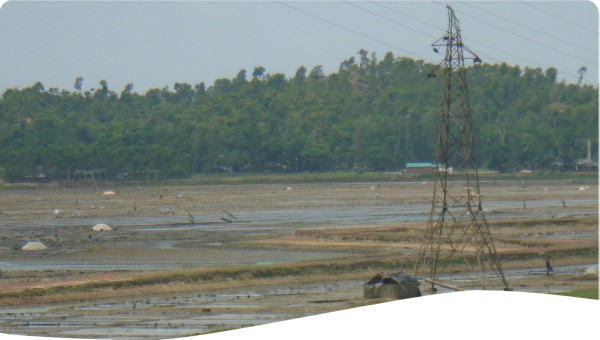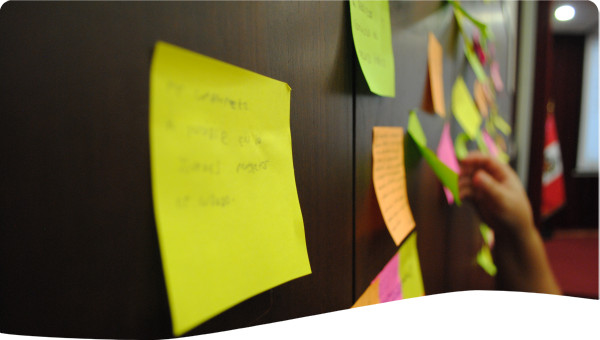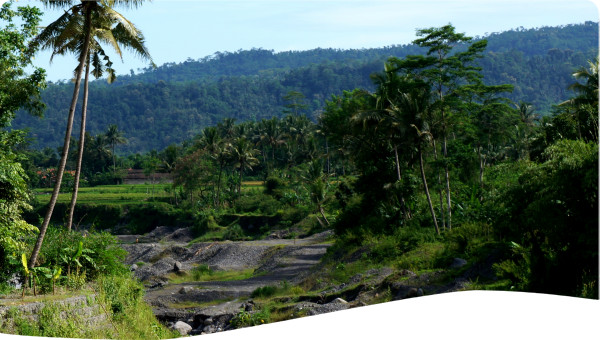Large scale projects in Slovakia caused negative effects in terms of biodiversity losses and reduced floodplain ecosystem functions. To combat this, a project “Integration of Ecosystem Management Principles and Practices into Land and water Management” of Laborec-Uh region was initiated. This case illustrates the importance of accounting for both biodiversity and economic returns when developing projects.
The project is located in Eastern Slovakia Lowlands, bordered by rivers Uh and Laborec. The area is bisected by Čierna Voda River (tributary of Laborec) whose catchment is largely within the project area.
Within the area several protection zones were designated: Ramsar site Senné, State Nature Reserve Senné, Special Protection Area (SPA) under Bird Directive and 2 candidate Special Areas of Conservation (SAC) under Habitats Directive with the aim to protect and stabilize wetland ecosystems. These can create conditions for extensive agricultural practices and rural tourism development.
The area of Laborec – Uh river basins in the Eastern – Slovakian Lowland belonged to the regions of high prevalence of floods. In early 60s, almost all streams were regulated; investments were made in a massive construction of flood protection and water accumulation facilities. However, these engineering works caused negative effects in terms of biodiversity losses and reduced floodplain ecosystem functions.
In terms of biodiversity conservation, these practices have led to severely reduced area of natural floodplain habitats, reduced water quality because of pollution by fertilisers from agriculture and by PCBs from industry (Chemko Strážske factory situated upstream) and declined populations of threatened species such as Chequered Lily, Spoonbill, Bittern and Otter. In addition, they have reduced the floodplain ecosystem functions (flood attenuation, nutrient reduction, pollution control, groundwater recharge, fish spawning areas). At present, water levels and its availability are entirely artificially managed. The local land use and urban development has become accustomed to this situation. The water quality of the rivers in the project area varies from good to poor in terms of their ecological status, as defined by the WFD.
To deliver practical example when implementing both EU Water Framework Directive (WFD) and Natura 2000, UNDP/GEF supported the project “Integration of Ecosystem Management Principles and Practices into Land and water Management of Laborec-Uh region”.
Activities relating to the development of the Čierna voda RBMP are carried out by the implementation agency – Slovak Water Management Enterprise Žilina (SVP), branch Bodrog and Hornád Basin. Costs related to development of RBMP are covered by SVP as part of cofinancing. This activity is also supported by the Slovak Hydrometeorological Institute (SHMU) and Water Research Institute (VUVH). It is the first pilot Water Management Plan elaborated within Slovakia, which provides opportunities for further application in other River Basins in Slovakia.
The Water Framework Directive (WFD) takes an Ecosystem Approach, explicitly demanding that water resource management considers the whole river basin, without stopping at administrative boundaries. A key component of the Water Framework Directive is development of river basin management plans which will be reviewed on a six yearly basis and which set out the actions required within each river basin to achieve environmental quality objectives.
The project team, in a close cooperation with stakeholders in the river basin, worked on the development of a River Basin Management (RBM) Plan together with the elaboration of the Integrated Local Development Strategy.
Preparatory works included research of available studies provided by Slovak Hydrometeorological Institute (SHMU) and Water Research Institute (VUVH), survey of the channel system and revision of its functionality consultations with Slovak Technical University on possibilities for floodplain restoration using existing water management systems. Further studies included ichtyological mapping, biotope mapping, hydrological mapping, elaboration of Digital Elevation Model and hydrological modelling.
In addition, nature protection authorities and nature conservation-oriented NGOs joined the project team to revise and upgrade the Plan for restoration and management of meadows within the whole project area. The project actions also include restoration and reconstruction of flood protection infrastructure.
It is the first pilot RBM Plan elaborated within Slovakia, that comprise elaboration of RBM Plan as required by the water legislation and elaboration of Local Socio-Economic Development Strategy. This is crucial aspect: the RBMP process is harmonized with the biodiversity protection and socio economic development of the area which are being implemented at the same time.
The River BMP was developed and submitted for internal comments on December 2008. It describes assessment of the water quality and proposes possible measures for achieving good status of waters by end of 2015 in the river basin: 14 surface water bodies have been identified within the river basin. Five of them are at risk to achieve good status (Laborec, Uh, Čierna voda, Kanál Veľké Revištia – Bežovce, Okna). 9 water bodies are at possible risk due to failure of reaching the ecological status criteria (organic pollution, hydromorphological change and diffusive sources of pollution). Due to insufficient monitoring data on remaining water courses such as channels, an expert judgment to estimate water status of these waters was used. However, it is necessary to confirm these preliminary results by undertaking more detailed monitoring.
By the end of the project, an innovative stakeholder partnership (i.e. a Leader Local Action Group) will be in place in the project area that can continue to implement a self-sustaining water and land management programme resulting in environmentally sound agricultural practices, alternative non-farm livelihoods, and further expanding the extent of (semi-) natural floodplain habitats that support a representative range of species. In addition, the project will simultaneously work on preparation of the Integrated Local Development Strategy and the Plan for restoration and management of meadows, by which the existing conflicts could be resolved by the parties concerned.
This case shows that changes in water management can be made to restore semi-natural floodplain habitats while preserving the flood protection function in the area.
Since similar situations have occurred throughout the Danube River catchment floodplains, testing such approach of implementing EU WFD can contribute to developing best practice for future interventions.
 Case studies
Case studies

